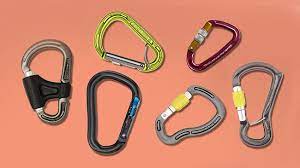What Are Carabiners and How Are They Used in Climbing and Rescue?
Carabiners may appear small, but their role in climbing and rescue work is significant. From securing ropes durin

Carabiners are small but vital pieces of equipment that play a central role in climbing and rescue operations. These metal connectors, often shaped like a loop with a spring-loaded gate, are designed to link ropes, harnesses, and other safety tools. Their compact design and dependable strength make them indispensable for both professionals and recreational climbers.
What Are Carabiners?
Carabiners are metal clips, usually made of aluminium or steel, that open and close with a spring gate. They come in different shapes, such as oval, D-shaped, and pear-shaped, each serving a specific function. Some carabiners are non-locking, meant for quick clipping, while others are locking, providing added security during critical tasks. These variations allow users to select the right type depending on the demands of the activity.
Uses in Climbing
Climbers rely heavily on carabiners for multiple safety and support functions. Some of the key uses include:
- Attaching ropes to anchors securely
- Connecting belay devices for controlled climbing
- Clipping into protection points along a route
- Supporting safe ascent and descent techniques
Together, these uses make carabiners one of the most trusted tools in any climber’s kit.
Role in Rescue Operations
In rescue scenarios, quick action and reliable equipment are essential. Carabiners provide critical support by helping teams perform tasks such as:
- Securing pulleys to create mechanical advantage
- Lowering injured individuals in controlled movements
- Setting up rope systems for access or evacuation
- Making fast, strong connections in emergencies
Because of these roles, carabiners are considered lifesaving equipment in high-risk rescue work.
Choosing the Right Carabiner
Not all carabiners are the same, and choosing the right one depends on the situation. Common options include:
- Aluminium carabiners: lightweight and ideal for climbing
- Steel carabiners: heavier but stronger, best for rescue tasks
- Locking types: screw-gate or auto-lock for extra security
Selecting carefully ensures a balance between strength, weight, and ease of use.
Importance of Proper Use
Even reliable tools like carabiners need proper handling. Key safety checks include:
- Always confirm the gate is closed and locked
- Inspect for cracks, sharp edges, or faulty gates
- Use locking systems when maximum safety is required
Following these steps helps avoid accidents and ensures the carabiners perform as expected.
Practical Perspective
For newcomers, training with carabiners under supervision builds confidence and prevents mistakes. Beginners should practise:
- Clipping and unclipping efficiently
- Handling locking mechanisms correctly
- Checking for signs of wear and tear
These simple habits make the use of carabiners second nature in both climbing and rescue settings.
Conclusion
Carabiners may appear small, but their role in climbing and rescue work is significant. From securing ropes during a climb to enabling safe rescues in emergencies, they serve as trusted connectors between safety equipment and human lives. When chosen carefully and used responsibly, carabiners offer a simple yet effective solution to some of the most challenging environments.



